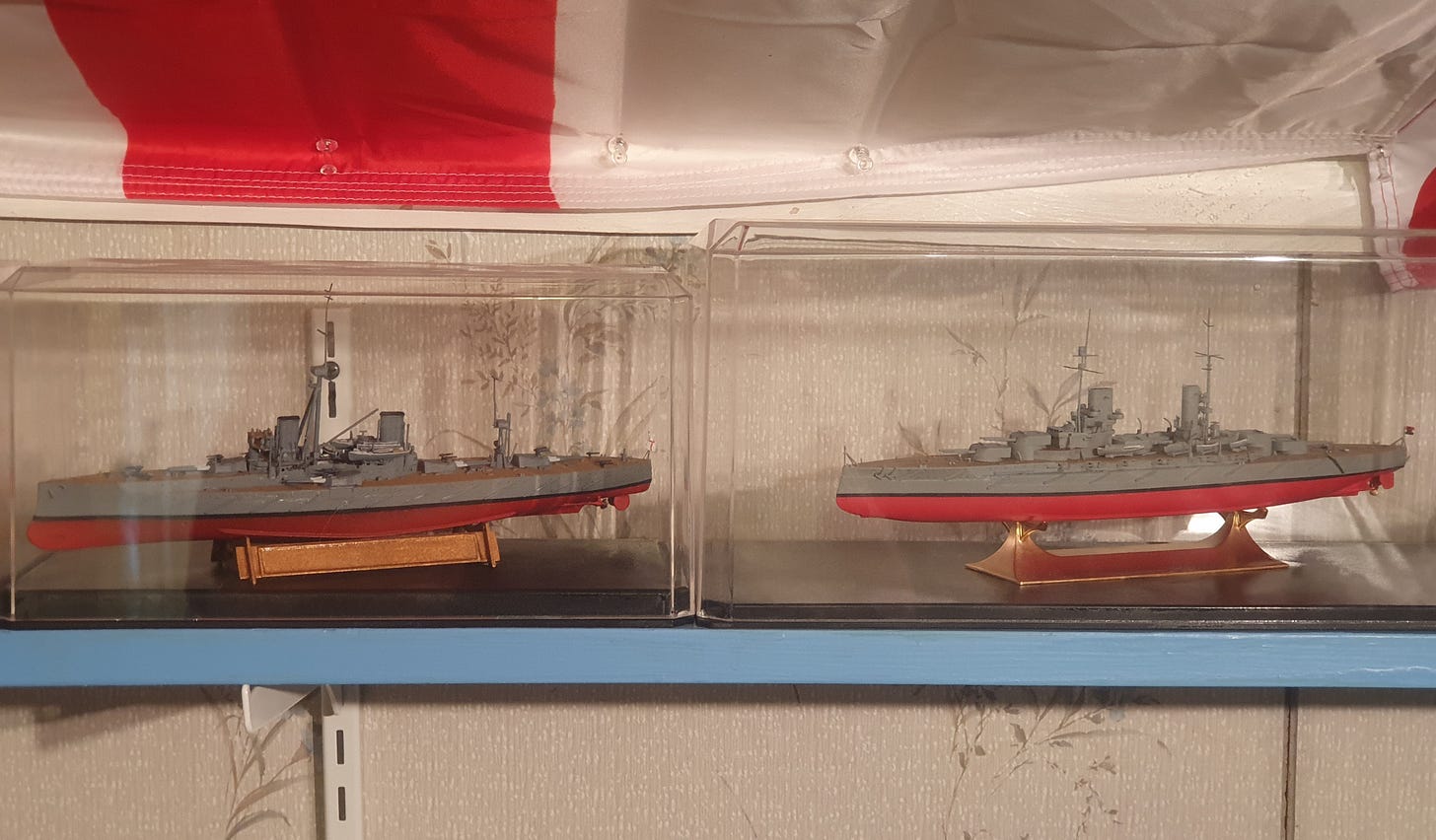Dreadnoughts-a-Deux
The pre-WWI battleship race in 1/700 scale
When she was commissioned at the end of 1906, the HMS Dreadnought (left) was the most powerful battleship the world had ever seen. Less than four years later, the SMS Großer Kurfürst (right) was laid down with the same main armament, the same speed, but about 8,000 tons more displacement, with most of that mass going to armor. Placed side by side, the t…
Keep reading with a 7-day free trial
Subscribe to Polemology Positions to keep reading this post and get 7 days of free access to the full post archives.


